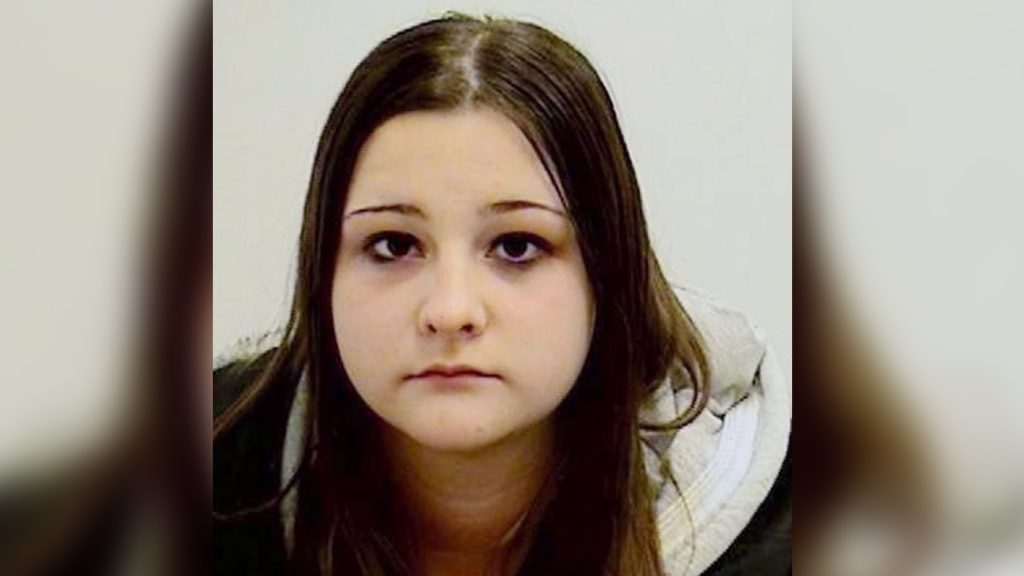2018-style Common Sense Revolution key to PC party return to power
Posted June 7, 2018 10:58 pm.
Last Updated June 7, 2018 11:45 pm.
This article is more than 5 years old.
The PC party appeared poised to return to power after Patrick Brown went from outsider and long-shot candidate to leader in 2015, signing up thousands of new members in the process – many from the GTA which had shunned the Conservatives in the past. Brown’s ‘People’s Guarantee’ helped position the Conservatives as a centrist party and public opinion polls showed the PCs with a large lead over the Liberals.
Then came the bombshell that threatened to derail all the gains made over the course of the last two years. At a hastily called news conference on the night of January 24, a pale looking and disheveled Brown shocked a room full of reporters by denying allegations of sexual misconduct brought against him by two women, dating back to 2013.
In the chaotic days that followed, an intense power struggle ensued for control of the party. The resulting fallout saw Brown forced out as leader and a purge of high ranking party executives loyal to him. Instead of focusing resources on the upcoming provincial election, the party was now forced into a snap leadership convention which was fraught with drama and controversy. Brown himself attempted to re-insert himself into the leadership race only to resign a second time five days later.
While the party hoped the leadership race would unify the membership, it appeared the tumultuous 44-day campaign had the opposite effect. On decision day, party faithful waited for hours for an announcement only to be told they would have to leave the convention centre without knowing who their new leader was. Doug Ford ultimately emerged victorious but his plea to unite the party appeared precarious after reports rival Christine Elliott would be challenging the results.
Through it all, polls continued to show the PCs were still the party of choice. What was once a double-digit lead had been whittled down to a few percentage points in the waning days of election campaign.
“A new day has dawned in Ontario: a day of opportunity, a day of prosperity and a day of growth. We’re going to turn this province around. We will make sure Ontario is the greatest place on earth to live, to do business and to raise a family. And we will make Ontario once again the engine of Canada.”
GTA, 905 Belt ridings key to revival
Thursday’s Progressive Conservative victory bears a striking resemblance to the 1995 ‘Common Sense Revolution’ led by Mike Harris.
Like Doug Ford, Harris presented himself as a populist, speaking to “ordinary Ontarians” and vowing to do away with special interest and elites while pulling in support from working-class voters, traditionally an NDP stronghold.
The Conservatives were also able to tap into voter anger against the then-governing NDP with Harris pledging to cut personal income taxes and government spending. That resonated with voters, particularly those who had traditionally voted Liberal following a series of high profile policy reversals during the campaign.
The Conservatives also found fertile ground in what was traditionally a Liberal stronghold – the GTA. Roughly half of the 82 seats they won in 1995 came from the GTA, especially the neighbouring 905.
On Thursday night, the Conservatives picked up 26 seats from the crucial 905 belt and Toronto ridings which included sweeping all six Mississauga ridings which the Liberals easily won back in 2014.
PROMISES, PROMISES
While former leader Patrick Brown’s “People’s Guarantee” was lauded for its transparency in breaking down the cost of the platform, large parts of the PC’s platform since Doug Ford was elected leader remain vague. Despite promising to deliver a fully costed election platform, Ford pointed to the fact a dollar figure was provided alongside every announcement. However, economists have criticized that plan as fiscally imprudent. With about one week left in the campaign, the party did published a list of promises and their price tags, but no indication how they would pay for them
Despite promising to find billions in “efficiencies” if elected premier, Ford conceded that a Tory government would run deficits for the first two or three years. The size of those deficits or how the plan to eventually balance the budget has never been spelled out.
Some economists have pointed out that Ford’s pledge to deliver $6 billion a year in savings will be dwarfed by the spending initiatives announced throughout the campaign. Both the Liberals and NDP warned throughout the campaign that Ford’s “efficiencies” would amount to deep cuts to public services such as health care and education.
Ford has publicly stated on a number of occasions that savings will be found and not one single person would be laid off or lose their job.
Maclean’s magazine pieced together Ford’s policy positions from press reports, party press releases and social media posts:
DEFICITS
-Would run deficit in his first and second year, but hasn’t provided a timetable to balance the budget
-Vowed to cut $6 billion from Ontario’s budget without laying off any public employees but hasn’t specified which “inefficiencies” he’d eliminate
-Convene an “outside audit” to probe spending under the Liberal government of Kathleen Wynne at an estimated cost of $1 million and give more funding to the office of Ontario’s Auditor General
TAX CUTS
-Pledged to scrap the Liberals’ planned minimum wage hike from $14 to $15 next year
-Introduce an income tax credit for workers earning minimum wage so that anyone making less than $28,000 a year would pay no income tax.
-Cut corporate tax rates from 11.5 to 10.5 per cent in an effort to attract new businesses to Ontario
-Cut the small business tax rate from 3.5 per cent to 3.2 per cent
-Cut gasoline taxes by 10 cents a litre by ending the 4.3 cent a litre carbon tax along with a 5.7-cent reduction in the province’s fuel tax
-Use a tax rebate program to cover up to $6,750 for childcare costs—lower-income families would receive 75 per cent of child-care costs back
-May abolish the 15 per cent non-resident buyer tax on real estate introduced last year
-Cut middle-class income taxes by 20 per cent for those earning $42,960 to $85,923 annually, but unclear how it will be paid for
HYDRO
-Cut hydro bills by 12 per cent, on top of the Liberals’ 25 per cent promised cut and return all Hydro One dividends to Ontario families
-Fire Hydro One CEO Mayo Schmidt, who earned $6.2 million in 2017. Howver, since the utility’s privatization, that power no longer rests with the provincial government. Also, firing Schmidt would not come cheap as the CEO would be owed a severance payout of at least $10.7 million, according to the company’s annual shareholders report.
-Use “retroactive legislation” to prevent executives and board members from receiving large payouts if their jobs are terminated
HEALTH CARE
-Add 15,000 new long-term care beds over the next five years and 30,000 new beds over the next 10 years
-Put an end to “hallway medicine”, although no specifics provided as to how to accomplish that
-Spend $1.9 billion over the next decade on mental health and addiction support, estimated at approximately $190 million per year for a decade, with costs shared with federal government,
-Encourage more doctors to move to northern Ontario by cutting their provincial taxes down to as low as zero per cent
-Opposed to planned safe-injection sites for Ontario, particularly “in neighbourhoods”
-Increasing autism funding by an additional $38 million to a total of $100 million over five years mandate
-Spend $98 million a year to provide dental care to low-income seniors
DRUGS/ALCOHOL
-Consider privatizing the sale and distribution of weed but later softened his stance to say he is open to a hands-off approach to cannabis and letting the “free market dictate”
-Expand sales of beer, wine, cider and coolers into corner stores
-Lower the minimum price that beer can be sold for to $1 (plus deposit) per bottle, the level it was at prior to 2008.
EDUCATION
-“Scrap Kathleen Wynne’s ideological sex-ed curriculum and replace it with one that is age-appropriate, and only after real consultation with parents occurs”
-“Scrap discovery math, and replace it with proven methods of teaching.”
-Expand the mandate of the Higher Education Quality Council of Ontario to include a complaints and investigations process to evaluate violations of free speech
ENVIRONMENT/ENERGY
-Repeal Ontario’s existing cap-and-trade system and oppose the federally-mandated minimum price on carbon emissions, but did not address the $10 billion hole that would leave in the Tory plan
-End Ontario’s Green Energy Act
-Briefly supported opening Ontario’s Greenbelt to housing development to help drive down real estate costs in Toronto and the GTA but later walked it back, saying the area would be protected in its entirety
-Cancel energy projects initiated by the current Liberal government that are in the pre-construction phase
-Issue a moratorium on new energy contracts and re-negotiating other energy contracts
-Set up an emissions-reduction fund to invest in new emission-cutting technologies, though no detailed cost has been provided
TRANSPORTATION
-Commit $5-billion more funds for subways, relief lines, a two-way GO Transit to Niagara Falls as part of existing plan to build a regional transportation system
-Open the question of Hamilton’s $1.3 billion LRT project to a vote, noting that even if voters reject the LRT, Hamilton would receive the money for other infrastructure projects
-Develop new transportation infrastructure to open access to the Ring of Fire mining project in Northern Ontario’s James Bay lowlands
-Cut aviation fuel taxes on interprovincial flights to and from Northern Ontario, which Ford says will cost $11 million per year
Related stories:
TIMELINE: Doug Ford is the new premier-elect of Ontario










